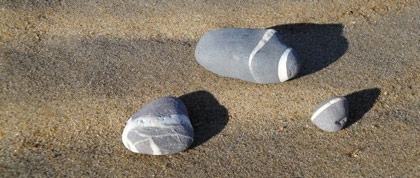by khall on January 18, 2010

This is the first of a three-part posting on the concept of intrinsic sustainability. In this post, Ken Hall describes the essential qualities of a sustainable society. Subsequent posts deal with the challenges of sustainable design teams and the built environment.
Miriam-Webster defines intrinsic as belonging to the essential nature or constitution of a thing. The challenge we face today is that sustainability is not intrinsic to our current way of thinking, designing, building, conducting business, and relating to each other and the places where we live.
Achieving high-performance environments requires substantial changes from business-as-usual thinking – for designers, builders and occupants. This is especially true when attempting to achieve a net-zero or carbon neutral environmental design.
First and foremost, the entire human chain – design team, client, and eventual users of the facility – must all share the intention to achieve predefined performance mandates, even if that means living within limits and being more flexible about received notions of comfort.
Secondly, we must relearn the principles of passive design and integrate them with clean technologies to deliver appropriate renewable energy for the needs of a sustainable society.
Categories: